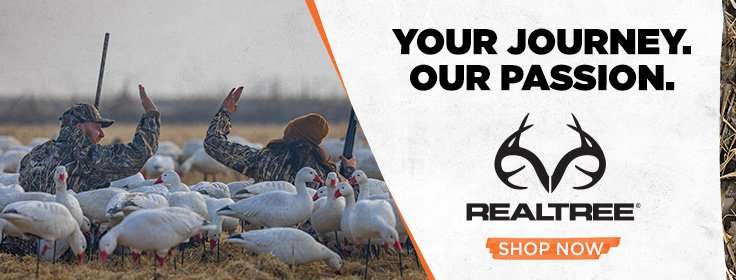The migration might be a bit late, but hunters report good bird numbers

Fall is here, and for eager waterfowlers, the long wait is finally finished. This period is always exciting, but it also relies heavily on colder weather up north to push birds down into the lower 48. The season has been open in Canada since the first part of September, and in the northern portions of the Mississippi flyway, hunters are seeing some early success as seasons open.
On a recent trip to Canada, friends and I experienced warmer-than-average temperatures, including a couple of afternoons hunting in short sleeves. Duck numbers were very good but not the numbers you might expect in the heat of a Canadian migration. Although every pothole held ducks, a lot of open water was available, and few potholes were loaded from shore to shore, as is often the case during peak migration in the northern prairies.
Dark geese had begun flying south. Lessers led the way, and some giants had started showing up. Specklebellies were sparse but still around in bunches — an indicator that their migration was underway. Some snows were still milling about. Although numbers were not great, it made me think we experienced the beginning of the end of the snow goose migration.
Lance Robinson, of Saskatchewan's Goose Haven Lodge, echoed my sentiments. All signs point to the migration having started but being a bit later than most years.
Specks and snows are still here, he said. We have had an unseasonably warm fall and have yet to see a hard-blowing day with winds coming from the north. Our prevailing wind is a western wind, but we'll see northern winds push a lot of birds down with a cold front. Typically, those are the big migrator days, but we haven't had any major cold fronts. Snow geese will normally start passing through from the end of September through the middle of October, and while not in huge numbers, we're still seeing new snows arrive. Typically, specks start south at the end of September, but here in the middle of October, there are a lot of specks feeding in our fields, and we're still shooting some specks.
Robinson echoed the same sentiment about ducks.
We're still seeing a lot of pintails, he said. They are normally gone by Oct. 1, but we're still killing some. We kill a lot of mallards, and the mallards we're seeing are still not fully colored. I think the fully plumed birds are farther north. Given the lack of coloration in the birds we're seeing, I would guess there are still a lot of birds that haven't come down yet.
(Don't Miss: Top Finishing Calls to Put Ducks in the Decoys)
Jeremy Dersham, of central Wisconsin's Ridge and River Running Outfitters, said drier conditions haven't prevented them from seeing ducks come down.
The theme for the early season in the Wisconsin area has been low water and certain species migrating on cue, he said. We have had great numbers of wood ducks and blue-winged teal moving throughout the state. Ringnecks have been plentiful in pockets. We are beginning to see early pushes of mallards, spoonies, wigeon and green-winged teal. Gray ducks have hit numerous areas through south-central and western Wisconsin. The migration is on.
Another Wisconsinite, Brian Lovett, echoed similar experiences to Dersham.
Everything seems to be on time here, he said. A cold front moved in late this week, and it seemed to bring the usual mid-October suspects: greenwings, wigeon, gadwalls, ringnecks, some mallards and the first real push of other divers, such as bluebills and canvasbacks. A lot of people are still shooting quite a few wood ducks.
My hunts have been pretty good — mostly mallards and bluewings. Strangely, quite a few bluewings are still hanging around. Some parts of Wisconsin are pretty dry, so that might concentrate birds a bit.
Lovett also reported seeing good numbers of geese.
It looks like strong pushes of migrating geese are mixing with local giant Canadas, he said. It's been a solid season so far, and the best is yet to come.
All accounts point toward the mass migration kicking off a little later than normal because of warmer weather in Canada, but plenty of birds are still moving south in preparation for earlier opening dates. Mass flocks of mallards appear to be later flying south, but other species are migrating on cue. Good luck to everyone kicking off the starts to their seasons. Check back for more migration reports as the season progresses.
(Don't Miss: Duck Decisions Revisited: What Worked, What Didn't)
Click here for more Realtree waterfowl hunting content. And check us out on Facebook.








